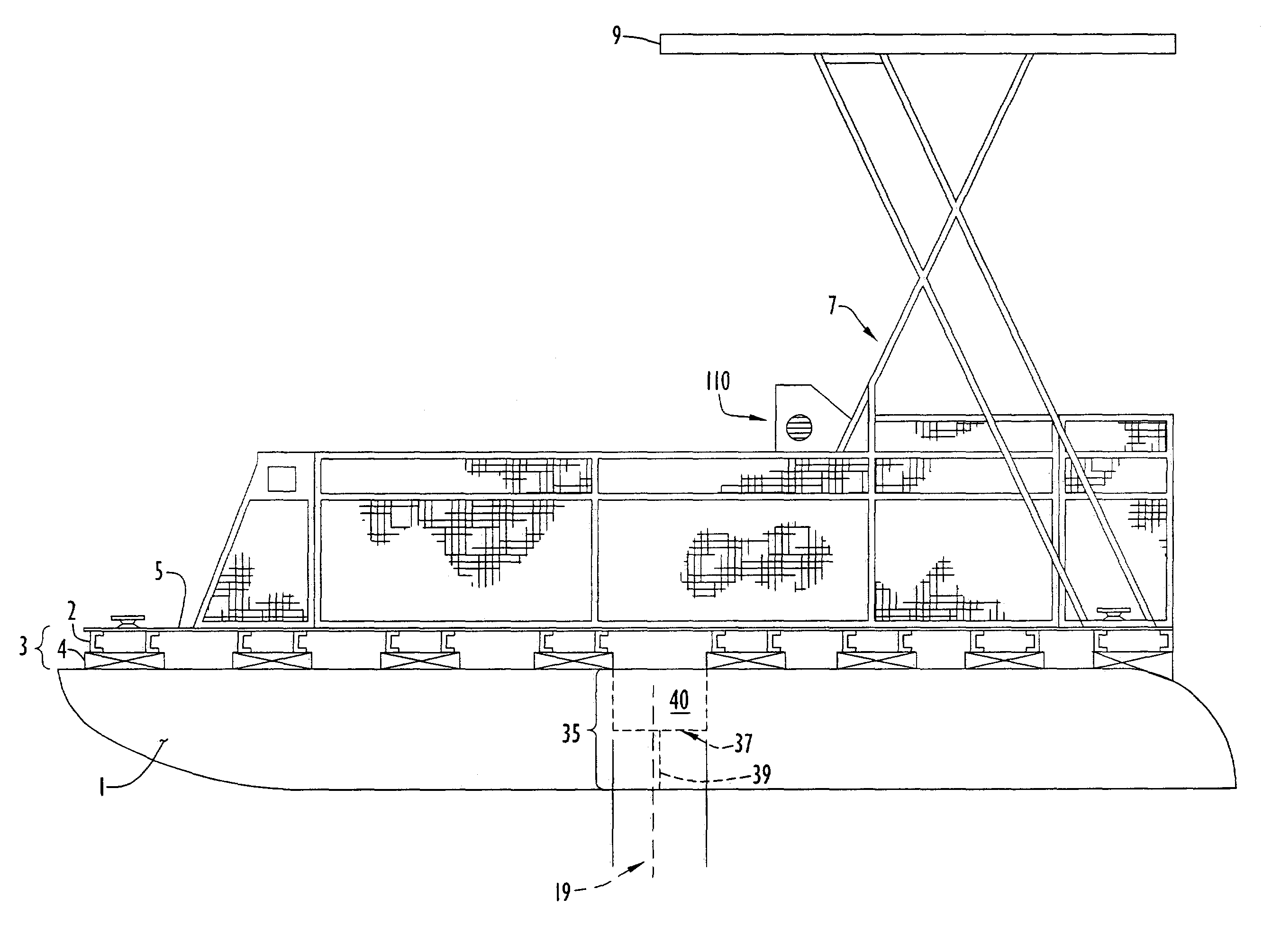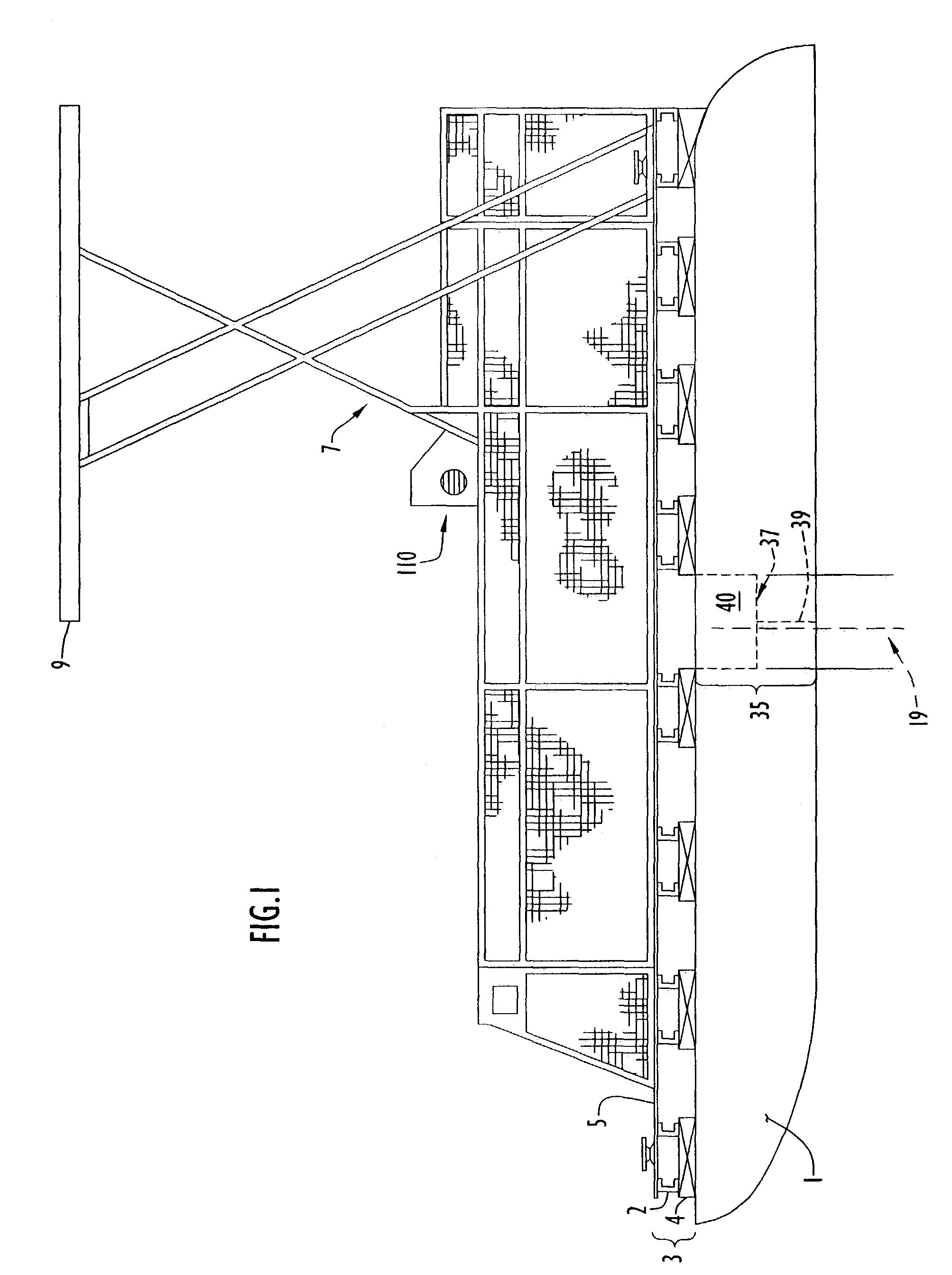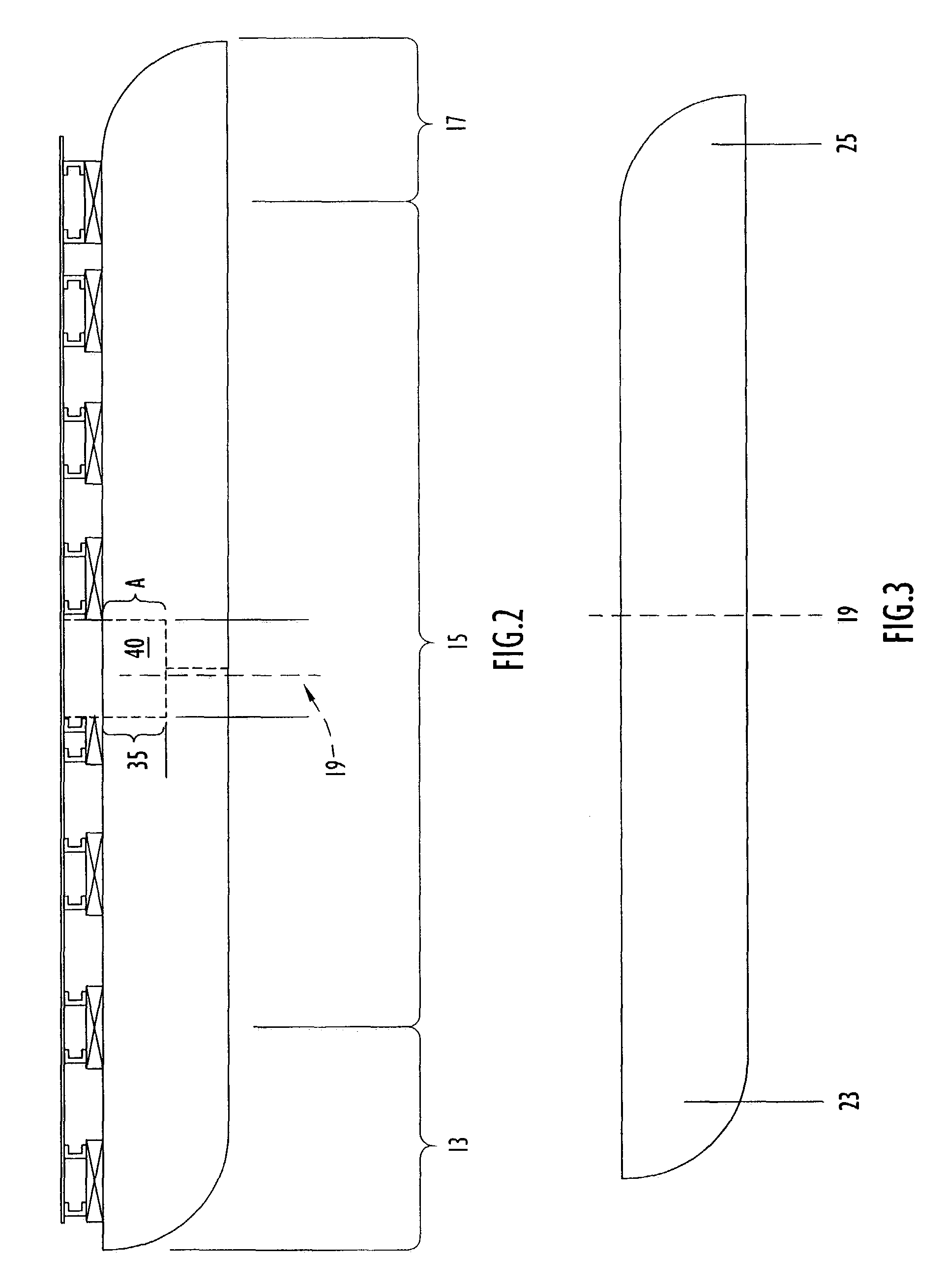Solar charged, electrically driven watercraft
a solar-powered, electrically driven technology, applied in the field of solar-powered pontoon boats, can solve the problems of electric boats not being able to compete with gasoline engines, environmental damage to the very waters and ecosystems, and electric boats still present engineering challenges, so as to reduce the effect of water forces on the craft, reduce water friction and wake, and stabilize the cra
- Summary
- Abstract
- Description
- Claims
- Application Information
AI Technical Summary
Benefits of technology
Problems solved by technology
Method used
Image
Examples
Embodiment Construction
[0059]The electric watercraft of the instant invention is shown in FIG. 1. Generally, the watercraft generally comprises a pontoon section 1 secured beneath a craft body including a deck section 5 by means of a strut section 3 including multiple spaced joists 2 and brackets 4. The strut section may further include a motor mounting bracket (not shown). In the embodiment shown: in the figure, the pontoon section 1 further comprises a battery box 40 located in battery bay 35. Supporting plates 37, 39, support the battery box 40 in a position about the pontoon center of flotation 19. A control console 110 is located on the deck 5. A solar canopy 9 including a ventilation system is supported above the deck 5 using a canopy supporting means 7. The supporting means 7 is conventional in the art and typically comprises a lightweight metal such as aluminum, but other coated or uncoated metals (e.g., chrome or stainless steel) may be used. A particularly preferred embodiment comprises hollow a...
PUM
 Login to View More
Login to View More Abstract
Description
Claims
Application Information
 Login to View More
Login to View More - R&D
- Intellectual Property
- Life Sciences
- Materials
- Tech Scout
- Unparalleled Data Quality
- Higher Quality Content
- 60% Fewer Hallucinations
Browse by: Latest US Patents, China's latest patents, Technical Efficacy Thesaurus, Application Domain, Technology Topic, Popular Technical Reports.
© 2025 PatSnap. All rights reserved.Legal|Privacy policy|Modern Slavery Act Transparency Statement|Sitemap|About US| Contact US: help@patsnap.com



